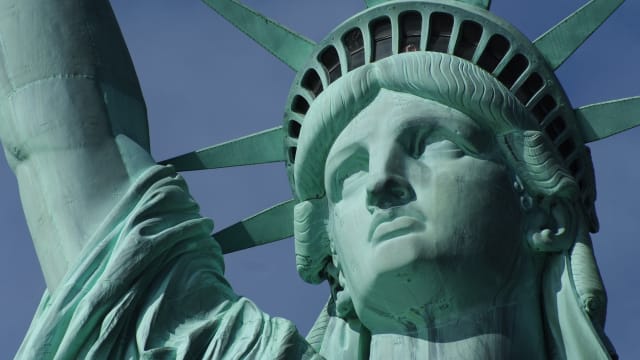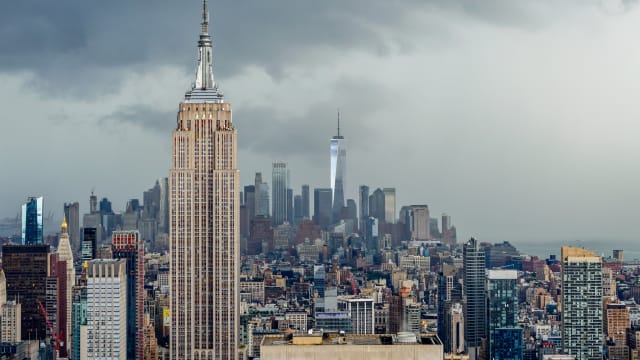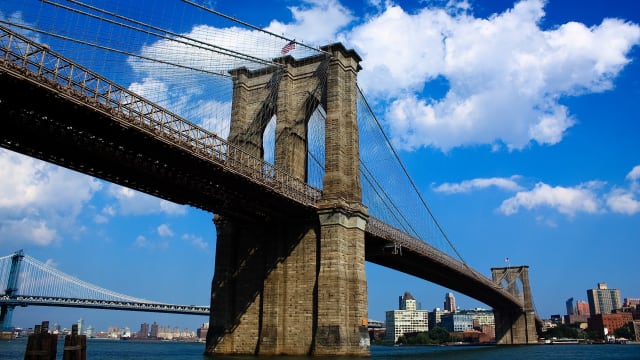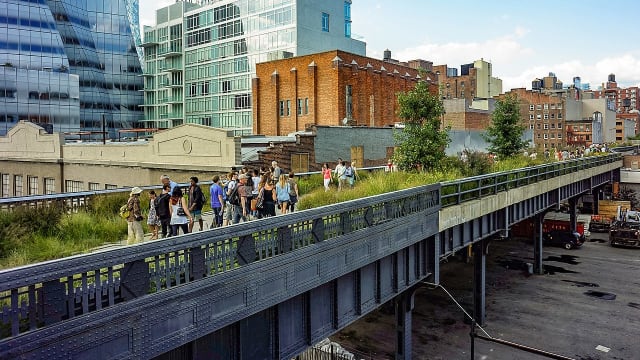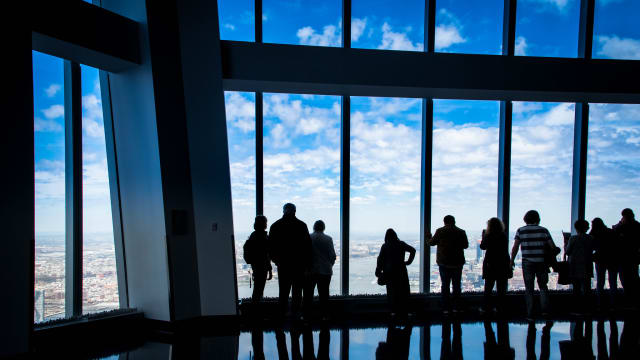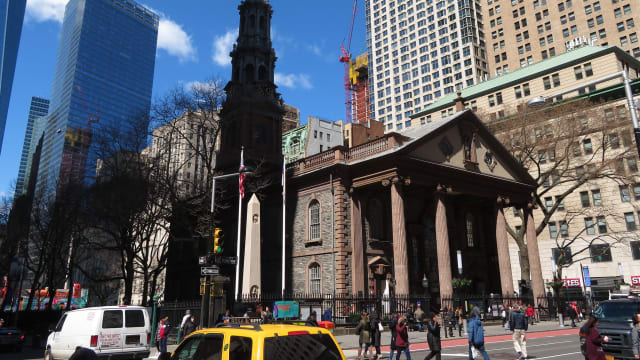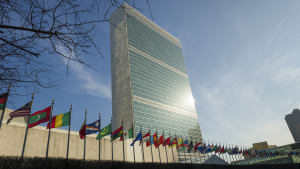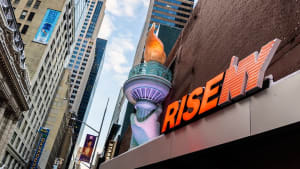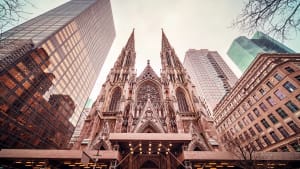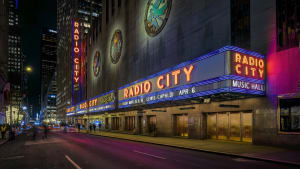The 9/11 Memorial
Step into a space of solemn reflection and profound tribute at the heart of New York City. The 9/11 Memorial is not just a place, but a poignant reminder of resilience, heroism, and the human capacity for renewal following the tragic events of September 11, 2001.
The 9/11 Memorial in a nutshel…
The 9/11 Memorial in New York City is a poignant tribute to the lives lost in the September 11, 2001, attacks and the 1993 World Trade Center bombing, offering a space for reflection and remembrance at the site of the former Twin Towers.
Location: 180 Greenwich Street in Lower Manhattan
Transportation: Easily accessible via multiple subway lines including the E at the World Trade Center and the 1 at WTC/Cortlandt station, as well as the M20 and M55 buses.
Tickets: Admission to the Memorial is free but a ticket is necessary to visit the museum. For those wishing to visit the 9/11 Museum, tickets can be purchased online to facilitate entry. For an enhanced experience, it is advisable to book a guided tour.
Visiting Hours: The Memorial is open daily from 8:00 am to 8:00 pm.
The 9/11 Memorial at Ground Zero commemorates the lives lost in the catastrophic terrorist attacks of September 11, 2001, as well as the 1993 World Trade Center bombing. Opened to the public on the tenth anniversary of 9/11, this memorial stands as a beacon of remembrance and reflection.
Walking through the Memorial, visitors are greeted by the twin reflecting pools set within the footprints of the original Twin Towers. These pools are not just architectural feats but are the heart of the memorial, symbolically representing the loss and absence left by the tragedy. Engraved around the pools are the names of every person who died in the 2001 attacks and the 1993 bombing, inviting personal moments of connection and remembrance.
The beauty of the 9/11 Memorial is that it is open to everyone, free of charge. It serves as a public space for reflection, remembrance, and education, conveying the story of that day through its serene setting and thoughtful design. Whether you’re a history enthusiast, a patriot, or simply someone who cherishes peace, a visit to the 9/11 Memorial is an essential, heart-stirring experience.
Practical information
Planning your visit to the National September 11 Memorial requires some preparation to ensure a smooth and reflective experience.
Location
The 9/11 Memorial occupies a significant portion of the World Trade Center site. Located at 180 Greenwich Street, it spreads across eight of the sixteen acres of the area, offering a spacious and reflective environment for visitors.
How to Get There
Navigating your way to the 9/11 Memorial is easy and convenient, making it accessible for everyone, whether you’re a local or a tourist. Here’s how you can reach this poignant landmark.
By Subway
The most convenient way to reach the memorial is by subway. The closest stations are the E line at the World Trade Center and the 1 line at the WTC/Cortlandt station, which will place you right at the memorial site.
Alternatively, the Fulton Street station serves multiple lines (A, C, J, Z, 2, 3, 4, 5), offering flexibility depending on your starting point. This station is just a short walk from the memorial, surrounded by various amenities.
By Bus
For those who prefer surface transport, several bus routes serve the area around the 9/11 Memorial. The M55 Southbound stops nearby at Broadway and Thames Street, and the M20 Southbound stops on South End Avenue. Both stops are within easy walking distance of the memorial, integrating well with the city’s other attractions.
Hop-on Hop-off Buses
Utilizing hop-on hop-off buses is an excellent choice for those who want to explore a range of attractions seamlessly. These buses connect major landmarks across the city, providing a flexible and scenic way to navigate New York City while learning about its rich history.
By Car
While driving in New York City can be challenging due to limited parking, those who choose to drive can find the nearest parking at the Battery Parking Garage on 70 Greenwich Street. However, public transportation remains the most stress-free way to access the Memorial.
Tickets
The 9/11 Memorial is open to all and free of charge, providing a space for quiet reflection. However, if you wish to visit the 9/11 Museum located at the site, purchasing a ticket online is recommended to ensure a smooth and planned visit.
Visiting Hours
The Memorial is open to visitors every day of the week from 8:00 am to 8:00 pm.
Best Time to Visit
To fully experience the Memorial in a contemplative atmosphere, visiting between 10:00 am and 12:00 pm is ideal, especially during the off-season. Early mornings offer a more peaceful setting, allowing you to engage deeply with the memorial’s elements without the crowd.
Tours
Explore deeper with a guided tour that not only educates but also emotionally connects you to the events of September 11. Each tour is designed to provide a comprehensive understanding of the site’s significance and the stories it holds.
9/11 Memorial, Ground Zero Tour with Optional 9/11 Museum Ticket
Embark on a journey through time with a 2-hour guided tour around the World Trade Center area. This tour not only details the events of September 11 but also offers optional access to the 9/11 Museum, allowing for a complete historical experience.
Manhattan Small Group Tour
Delve into the history of the Financial District and its recovery post-9/11 with a walking tour that combines the 9/11 Memorial with key financial sites. This tour is perfect for those interested in the broader narrative of recovery and resilience.
All-Access 9/11
This comprehensive tour includes skip-the-line access to the 9/11 Museum and Memorial, as well as entry to the One World Observatory. It’s a complete package for those who want an in-depth understanding of the site and spectacular views of the city.
4.5-Hour City Tour
Combine your visit to the 9/11 Memorial with other iconic New York landmarks such as the Statue of Liberty and Wall Street on this exclusive city tour. It’s an all-encompassing experience of NYC’s history and heritage.
Difference Between the 9/11 Memorial and the 9/11 Museum
While the 9/11 Memorial is a free outdoor space open to all, the 9/11 Museum requires a ticket and is located 70 feet underground. The memorial allows visitors to reflect at the very grounds where the Twin Towers once stood, encompassing the vast footprint of the original buildings. In contrast, the Museum offers a deeper dive into the narrative of 9/11 through its exhibits located beneath the Memorial, presenting a tangible connection to the events through personal artifacts and stories. The emotional impact of both spaces is profound and visiting both provides a fuller understanding of the scale and personal impact of the events of September 11.
When planning your visit to this significant site, remember that every step you take is not just through a museum or a memorial, but through the pages of history itself.
What to Do At and Around the 9/11 Memorial
At the memorial, the names of 2,983 victims are etched in bronze around the twin pools, marking the exact locations of the North and South Towers. As dusk falls, the site takes on a poignant atmosphere, with the quiet reflections in the water and the surrounding trees offering a space for contemplation and honor.
Explore the Memorial Pools, pay your respects at the impactful 9/11 Museum, or ascend to new heights at the One World Observatory, the highest observation deck in New York, providing breathtaking views across the cityscape.
The Survivor Tree
The Survivor Tree, a Callery pear, stands resiliently in the Memorial plaza. Discovered severely damaged at Ground Zero in October 2001, this tree was rehabilitated by the New York City Parks and Recreation Department and triumphantly returned to the site in 2010. It symbolizes the enduring spirit of survival and renewal amidst the recovery and rebuilding efforts following the attacks.
9/11 Museum
Adjacent to the pools, the 9/11 Museum serves as a profound continuation of the memorial experience. Located beneath the ground, it incorporates elements of the World Trade Center’s original structure and offers visitors a deep and personal connection to the events through poignant artifacts and narratives from the victims.
One World Trade Center
Rising from the site, One World Trade Center, also known as the Freedom Tower, claims its place as the tallest building in New York, the United States, and the Western Hemisphere. The One World Observatory on the 102nd floor offers unmatched 360-degree views of iconic landmarks like the Statue of Liberty and the Brooklyn Bridge.
The Oculus
The Oculus, a striking white structure designed to represent a bird taking flight, is not just a transportation hub but a unique architectural marvel. It features a skylight that aligns with the sun at the exact time of the second tower’s collapse on September 11, providing a poignant moment of remembrance each year.
Liberty Park
Overlooking the memorial, Liberty Park offers views of the Freedom Tower and features significant installations like The World Trade Center Sphere, which survived the attacks, and the St. Nicholas National Shrine, which was rebuilt after being destroyed on 9/11.
FDNY Memorial Wall
The FDNY Memorial Wall honors the 343 firefighters who sacrificed their lives on 9/11. Located opposite the 9/11 Memorial at Fire Station Ladder 10, this bronze artwork poignantly depicts the Twin Towers and chronicles the events of the day through depicted scenes and tools used by the first responders.
9/11 Memorial Glade
The 9/11 Memorial Glade recognizes the sacrifices of those who later became ill or died due to conditions at or near Ground Zero. Featuring six monoliths, this addition to the memorial landscape honors the resilience and suffering of survivors and rescue workers, completing the narrative of that fateful day and its aftermath.
Tips to Visit the 9/11 Memorial
When planning your visit to this significant site, keep in mind a few tips to enhance your experience and pay respects appropriately.
- Bring snacks and small bottles of water; just remember to maintain the solemnity expected at such a memorial.
- Explore the original framework and concrete sections of the Twin Towers at the WTC PATH station platform.
- Consider visiting the Empty Sky Memorial in New Jersey and the Staten Island September 11th Memorial for a broader perspective on the impact of the events.
- On a victim’s birthday, a touching tribute occurs with a white rose placed by their name, adding a personal touch to your visit.
Accessibility
Accessibility is a priority at the 9/11 Memorial, ensuring that everyone can pay their respects.
- Several accessible entrances are available around the site.
- The memorial accommodates wheelchairs, mechanized scooters, walkers, strollers, and other power-driven mobility devices.
- Service animals are welcome, ensuring that those with additional needs can experience the memorial fully.
Frequently Asked Questions
-
No, the 9/11 Memorial is free to all visitors, allowing unrestricted access to the pools and the plaza where the names are engraved.
-
The Memorial is open daily from 8:00 am to 8:00 pm, providing ample time for reflection throughout the day and into the evening.
-
Service animals are allowed at the Memorial, but pets are generally not permitted to maintain the solemn atmosphere.
-
Yes, several guided tours are available, including specific 9/11 thematic tours that offer in-depth insights into the events and their aftermath.
-
The easiest way to reach the 9/11 Memorial is by subway, with multiple lines serving nearby stations such as the World Trade Center station on the E line and WTC/Cortlandt station on the 1 line.
-
The 9/11 Museum includes artifacts, narratives, and parts of the original infrastructure of the Twin Towers, providing a deep and personal understanding of the events and the individuals affected.
-
The Survivor Tree is a symbol of resilience and renewal, having survived the attacks and been nurtured back to health, standing now as a poignant reminder of endurance and recovery.
-
The One World Observatory offers varying hours depending on the season, typically from morning till late evening, allowing visitors to experience stunning views of New York City.
-
Yes, other attractions such as the Oculus, Liberty Park, and several museums and memorials dedicated to 9/11 and New York City’s history are within walking distance.
-
Early mornings or late afternoons during the off-peak season are typically less crowded, providing a more intimate experience.
Where to Stay Near the 9/11 Memorial
Staying near the 9/11 Memorial offers not only convenience but also a deep connection to a pivotal area of New York City. The surrounding neighborhood of Lower Manhattan has transformed significantly, offering visitors a mix of historical intrigue and modern luxury. Hotels in this area provide easy access to the memorial and other significant landmarks, making it an ideal base for exploration.
However, if you prefer a quieter retreat, consider staying in areas such as Tribeca or the Financial District, which are close enough to visit the memorial easily but provide a slight remove from the hustle and bustle, ensuring a restful end to your emotionally charged day.
Other Interesting Landmarks in New York City
New York City is a tapestry of historical and cultural landmarks, each telling a unique story. Explore beyond the 9/11 Memorial to discover more about this vibrant city.
The Oculus
A stunning architectural feat, the Oculus serves as both a transportation hub and a shopping complex.
Designed by architect Santiago Calatrava, it is intended to symbolize a bird taking flight from the hands of a child. Its striking design and the poignant moment when sunlight aligns with its skylight make it a must-visit.
A stunning architectural feat, the Oculus serves as both a transportation hub and a shopping complex.
Designed by architect Santiago Calatrava, it is intended to symbolize a bird taking flight from the hands of a child. Its striking design and the poignant moment when sunlight aligns with its skylight make it a must-visit.
Statue of Liberty
A universal symbol of freedom and democracy, the Statue of Liberty was gifted to the United States by France in 1886.
Standing on Liberty Island in New York Harbor, it offers insights into American history and provides a backdrop for millions of memorable visits.
View details
A universal symbol of freedom and democracy, the Statue of Liberty was gifted to the United States by France in 1886.
Standing on Liberty Island in New York Harbor, it offers insights into American history and provides a backdrop for millions of memorable visits.
Empire State Building
An iconic landmark, the Empire State Building offers breathtaking views from its observation decks and a rich history displayed in its newly renovated museum.
It represents the ambition and ingenuity of New York, standing as a testament to the city’s architectural prowess.
View details
An iconic landmark, the Empire State Building offers breathtaking views from its observation decks and a rich history displayed in its newly renovated museum.
It represents the ambition and ingenuity of New York, standing as a testament to the city’s architectural prowess.
Brooklyn Bridge
A marvel of engineering, the Brooklyn Bridge connects Manhattan and Brooklyn by spanning the East River.
With its Gothic-shaped arches and suspension cables, it offers a picturesque walkway for pedestrians and cyclists, providing stunning views of the downtown skyline.
View details
A marvel of engineering, the Brooklyn Bridge connects Manhattan and Brooklyn by spanning the East River.
With its Gothic-shaped arches and suspension cables, it offers a picturesque walkway for pedestrians and cyclists, providing stunning views of the downtown skyline.
The High Line
A prime example of urban revitalization, the High Line is a public park built on a historic freight rail line elevated above the streets on Manhattan’s West Side.
It features lush horticulture, innovative design, and public art installations, making it a popular gathering place.
View details
A prime example of urban revitalization, the High Line is a public park built on a historic freight rail line elevated above the streets on Manhattan’s West Side.
It features lush horticulture, innovative design, and public art installations, making it a popular gathering place.
The Chrysler Building
Known for its stunning Art Deco architecture, the Chrysler Building is an iconic part of the New York skyline. Its terraced crown and triangular windows make it a standout feature of Midtown Manhattan, representing a significant period in architectural history.
View details
Known for its stunning Art Deco architecture, the Chrysler Building is an iconic part of the New York skyline. Its terraced crown and triangular windows make it a standout feature of Midtown Manhattan, representing a significant period in architectural history.
Other Nearby Attractions
The 9/11 Memorial is ideally situated in Lower Manhattan, surrounded by a myriad of other attractions that are perfect for continuing your exploration of New York. From historic sites to modern architectural marvels, this area is rich with opportunities for discovery and learning.
One World Observatory
Experience New York from above at One World Observatory. Situated atop the tallest building in the Western Hemisphere, this observatory offers unparalleled views of New York City’s skyline, making it a must-visit for breathtaking photographs and memorable experiences.
View details
Experience New York from above at One World Observatory. Situated atop the tallest building in the Western Hemisphere, this observatory offers unparalleled views of New York City’s skyline, making it a must-visit for breathtaking photographs and memorable experiences.
The Oculus
The Oculus, designed by Santiago Calatrava, is not just a transportation hub but a symbol of rebirth and renewal. Its unique structure and annual tribute to 9/11 make it a significant site for both architectural enthusiasts and those touched by the city’s history.
The Oculus, designed by Santiago Calatrava, is not just a transportation hub but a symbol of rebirth and renewal. Its unique structure and annual tribute to 9/11 make it a significant site for both architectural enthusiasts and those touched by the city’s history.
Battery Park
Located at the southern tip of Manhattan, Battery Park offers lush green spaces and stunning waterfront views. It is also a departure point for ferries to the Statue of Liberty and Ellis Island, making it a pivotal spot for those looking to explore further.
Located at the southern tip of Manhattan, Battery Park offers lush green spaces and stunning waterfront views. It is also a departure point for ferries to the Statue of Liberty and Ellis Island, making it a pivotal spot for those looking to explore further.
Wall Street
Dive into the heart of the financial district on Wall Street. Known globally as a center of finance, this area offers not only the New York Stock Exchange but also historical sites like Federal Hall, where George Washington was inaugurated as the first President of the United States.
Dive into the heart of the financial district on Wall Street. Known globally as a center of finance, this area offers not only the New York Stock Exchange but also historical sites like Federal Hall, where George Washington was inaugurated as the first President of the United States.
Trinity Church
Trinity Church stands as a historic parish church in the Episcopal Diocese of New York. Located at the intersection of Wall Street and Broadway, it is known for its distinctive Gothic Revival style and for being a place of worship and reflection in the bustling city.
Trinity Church stands as a historic parish church in the Episcopal Diocese of New York. Located at the intersection of Wall Street and Broadway, it is known for its distinctive Gothic Revival style and for being a place of worship and reflection in the bustling city.
St. Paul’s Chapel
Not far from the 9/11 Memorial, St. Paul’s Chapel is an enduring sanctuary of peace and history. As the oldest surviving church building in Manhattan, it served as a place of rest and refuge for recovery workers following the 9/11 attacks.
View details
Not far from the 9/11 Memorial, St. Paul’s Chapel is an enduring sanctuary of peace and history. As the oldest surviving church building in Manhattan, it served as a place of rest and refuge for recovery workers following the 9/11 attacks.
Brookfield Place
This upscale shopping and dining complex near the Hudson River offers a variety of high-end boutiques and eateries, making it a perfect spot to relax and rejuvenate after a day of exploration around Lower Manhattan.
This upscale shopping and dining complex near the Hudson River offers a variety of high-end boutiques and eateries, making it a perfect spot to relax and rejuvenate after a day of exploration around Lower Manhattan.

